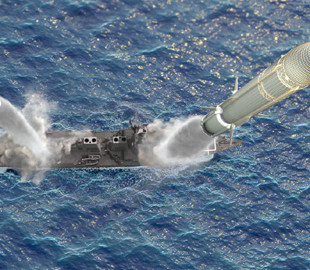
Japan and the US have joined forces to create a new anti-aircraft missile designed to counter hypersonic weapons.
Actually speaking, conversations about the need to create such a weapon and to unite the efforts of both countries around this idea have been going on for more than one year. At the very beginning, the Tokyo news agency Kyodo News reported that the relevant agreement had acquired specific features.
Later, the Pentagon released an official statement that the United States Department of Defense (DoD) and the Japanese Ministry of Defense (MOD) have signed an official agreement on a joint development project called the Glide Phase Interceptor (GPI), reports ArmyInform.
This ambitious program was named Glide Phase Interceptor. Its cost will be more than $3 billion.
As part of the cooperation, Japan will allocate $1 billion and take a leading role in the development of rocket engines and engine components.
In turn, in the USA, the GPI hypersonic missile interceptor development program is being conducted by two American defense giants – by Northrop Grumman and Raytheon Technologies. These organizations started working on the project in 2021, and since then have been actively advancing in its implementation.
In general, the main purpose of GPI – to provide effective regional defense against hypersonic missiles that can develop speeds of more than Mach 5, which is five times the speed of sound. They can also change course during flight, which makes it difficult to shoot them down and track them with radar.
The new anti-missile will be able to intercept hypersonic threats at the stage of their penetration into the dense layers of the Earth's atmosphere, which will significantly increase the effectiveness of protection.
The GPI anti-missile will be integrated into the Baseline 9 Aegis combat information and control system, which is installed on modern Arleigh Burke-class destroyers. This will allow the use of interceptors not only at sea, but also on land – in Typhon ground installations. The missiles will be launched from Mk.41 VLS vertical launchers, which will add flexibility and versatility to the system.
Analyzing the reasons that caused the need for the implementation of this project, the expert of the IKK Defense Express noted that although earlier in the USA they told that the capabilities of the Patriot PAC-3 and Aegis SM-6 should be sufficient to withstand the hypersonic missiles of the Russian Federation and China, but in the end, the USA still decided to force the development of specialized interceptors.
Raytheon intends to use components in the GPI design that have already been tested in other missile and hypersonic programs. This will speed up the development process and increase the reliability of the final product.
"Joint development was agreed upon by President Joe Biden and Japanese Prime Minister Fumio Kishida last August on the eve of a trilateral summit with his South Korean counterpart at Camp David near Washington,&rdash; Japanese reporters said.
It is noted that this joint project appeared at a time when China, North Korea and Russia are aggressively developing the capabilities of their hypersonic weapons.
It is noted that this is the second time that Japan and the US have decided to jointly develop an interceptor missile after the Standard Missile-3 Block 2A.
The development of the GPI hypersonic missile interceptor is an important step in strengthening the defense capabilities of the US and Japan. The joint efforts of the two countries demonstrate a high level of technological cooperation and the desire to create advanced defense systems capable of resisting modern threats. In the conditions of growing global tensions, such an initiative is of particular importance for ensuring security and stability in the region.
The development of the missile is planned to be completed during the 2030s.

